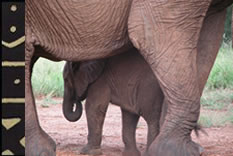Mkomazi National Park
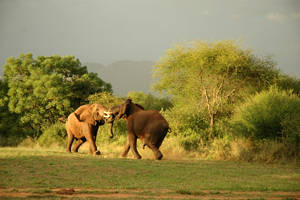 The Mkomazi National Park is a magnificent, 3,270 square kilometre park in northern Tanzania. Remote and inaccessible, it was established as a game reserve in 1951, but never attracted the financial support provided for the better known wildlife strongholds such as the Ngorongoro and the Serengeti National Parks. Only since 1989, when the Tanzanian Government re-examined the reserve's status and designated it a National Priority Project, was its true significance and importance recognized.
The Mkomazi National Park is a magnificent, 3,270 square kilometre park in northern Tanzania. Remote and inaccessible, it was established as a game reserve in 1951, but never attracted the financial support provided for the better known wildlife strongholds such as the Ngorongoro and the Serengeti National Parks. Only since 1989, when the Tanzanian Government re-examined the reserve's status and designated it a National Priority Project, was its true significance and importance recognized.
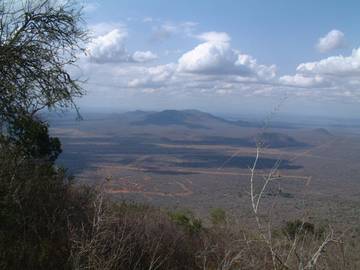
Mkomazi National Park is a spectacular wilderness. Within sight to the northwest is Mount Kilimanjaro, Africa's highest summit. To the south, the Pare and Usambara Mountains form a dramatic backdrop and, to the north, Kenya's vast Tsavo National Park shares a border with Mkomazi, making common ground for migratory herds of elephant, oryx and zebra during the wet season. Together with Tsavo, it forms one of the largest and most important protected ecosystems on earth.
Mkomazi is the southern tip of the Sahel zone. It is a classic dry-country reserve of grey-green nyika bush, ancient baobab trees and isolated rocky hills. Elsewhere, the seas of bush give way to open savannah woodlands of umbrella acacias and mbugas - shallow valleys of grassland.
The animals, too, are typical of the arid nyika. Giraffe, oryx, gerenuk, hartebeest, lesser kudu, eland, impala and Grant's gazelle share the park with elephant, buffalo, and numerous predators, including lion, leopard and cheetah. In all, 78 species of mammals have been recorded.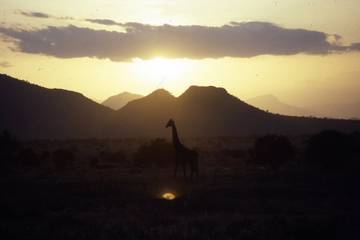
The birds of Mkomazi are even more numerous, with over 400 recorded species. Doves, hornbills, weavers and guinea-fowl are all present in large numbers - as well as such striking species as the martial eagle and violet wood-hoopoe.
1989-2020
GAWPT launched their part of The Mkomazi Project in 1989 in response to an invitation by the Government of Tanzania to work with them to on a programme to undertake the restoration and rehabilitation of Mkomazi Game Reserve, 3,270 square kilometres in the north of Tanzania. The reserve borders Tsavo National Park in Kenya and together they form one of the largest protected ecosystems in Africa. In the past it had supported a vast range of African wildlife and was an important winter sanctuary for the elephant.
It was a daunting task. By 1989 Mkomazi Game Reserve was in a dire state of neglect - widespread commercial poaching and the massive illegal incursion of cattle had degraded the land and reduced the abundant wildlife which was snared and hunted to near extinction. The Wildlife Division Project Manager, Hezekiah Mungure, had started working on the Project the year before and we were fortunate to work with such a dedicated, knowledgeable and long-serving wildlife officer.
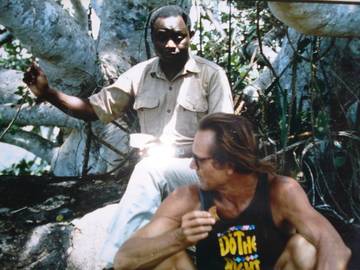 |
Hezekiah Mungure, the Wildlife Division Project Manager of Mkomazi Game Reserve |
In the beginning the Project had two assets. Tony Fitzjohn, the Field Director, and a Massey Ferguson tractor purchased with a bank loan guaranteed by trustees. 50 Friends of Mkomazi were recruited, individuals from many backgrounds and all dedicated to the endeavour. Their contributions provided the base from which the Project started. Many still contribute on a regular basis.
The Success
The statistics are extraordinary. The work of the Trust has included the construction of 800 miles of roads; the re-clearing of boundaries; dam de-silting and construction; the installation of radio networks; drilling for water and the construction of storage tanks; the clearing and maintenance of six airstrips and extensive fire breaks; the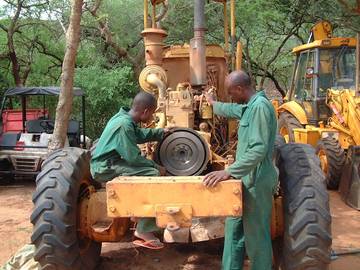 establishment of a base camp; over 3,000 hours of aircraft patrols and surveys; the hiring of Tanzanian personnel; procurement of vehicles; the construction of a purpose built workshop and permanent ranger outposts. It has provided good employment for 50 Tanzanians.
establishment of a base camp; over 3,000 hours of aircraft patrols and surveys; the hiring of Tanzanian personnel; procurement of vehicles; the construction of a purpose built workshop and permanent ranger outposts. It has provided good employment for 50 Tanzanians.
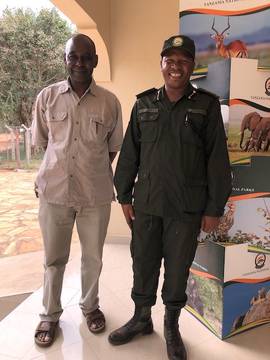 |
Elisaria Nnko with former Chief Park Warden, Abel Mtui |
In the course of the Project, the Trust has received growing and invaluable support and assistance from many wildlife trusts, foundations, individuals, institutions and companies across Europe, America and Africa.
This work, in partnership firstly with the Wildlife Division and then later with the Tanzanian National Parks authority, led to spectacular changes in the Reserve, its habitat and the wildlife population. Illegal grazing and burning has now been largely eradicated. Wildlife has returned in substantial numbers, in particular the elephant. By 1989 their numbers had been reduced to just 11 individuals. By 2020 up to 600 elephant were counted during the wet season. 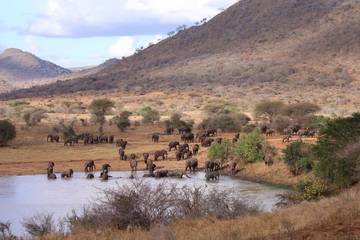
This transformation has included intensive programmes to preserve endangered species, centered on the black rhino (Diceros bicornis michaeli) and the African wild dog (Lycaon pictus). A rhino sanctuary has been constructed covering 55 square kilometres. Through a series of complex international operations 15 black rhinos were translocated to the sanctuary from South Africa, the Czech Republic and the United Kingdom. The breeding population is now 35.
Our education and outreach programmes have become role models for conservation within communities and included the construction of a secondary school with science laboratories, computer rooms, a headmaster's house and staff quarters. As a result the village of Kisiwani now has a secondary student population of over 300.
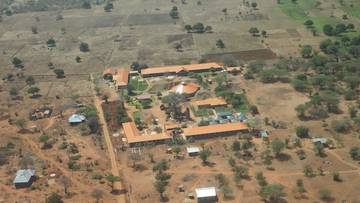 In the nearby village of Gonja, we helped to construct and equip a Vocational Training Centre and secondary school with capacity for 300 students. Classrooms have been constructed in 32 other primary and secondary schools.
In the nearby village of Gonja, we helped to construct and equip a Vocational Training Centre and secondary school with capacity for 300 students. Classrooms have been constructed in 32 other primary and secondary schools.
The Rhino Sanctuary has an environmental educational centre with full audio/visual equipment. Children arrive in a 28 seater bus modified as an education classroom and staffed by our environmental educational officer. 800 schoolchildren, 150 school teachers and 100 elders and community leaders attended this programme every year. 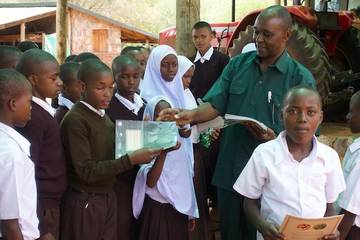
The success of The Mkomazi Project as an international model for rehabilitation and conservation was recognised in 2008 by the designation of National Park status for Mkomazi by the Government of Tanzania. In 2006 Tony Fitzjohn was awarded the OBE.
In 2019 the Tanzanian National Parks Authority (TANAPA) and the Government of Tanzania began to take over the running of the Project with a transition period of two years. The handover agreement, signed in October 2019, was inevitable, organised and amicable.
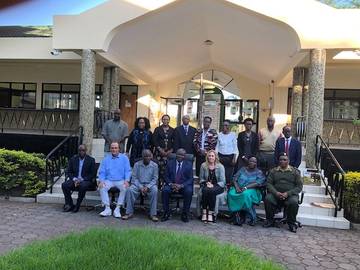 |
The Board of Trustees of TANAPA and the Board of Trustees of Wildlife Preservation Trust Fund at the handover ceremony at TANAPA HQ in October 2019. |
Mkomazi has long been recognised as one of the most prestigious, well equipped and successful wildlife conservation projects in East Africa. We are proud to leave this legacy together with the full infrastructure of the Mkomazi Rhino Sanctuary, a well-functioning workshop, the base-camp, the African wild dog programme and the environmental education programme. We have also been able to donate a massive quantity of equipment and state of the art technology in order to enable the systems we established to be maintained. We are particularly proud that from the creation of the Sanctuary and during twenty two years of stewardship we lost not a single rhino to poachers. An extraordinary achievement during a period of rampant destruction.
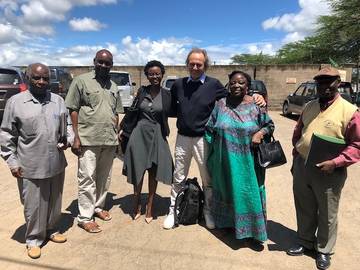 |
Trustees of Wildlife Preservation Trust Fund in Tanzania and the trust's legal secretary on the day of the handover. From left Bernard Mchomvu-Chairman, Elisaria Nnko, Asella Msando, Tony, Rose Lugembe and Kinemo Kihomano |
 |
Elisaria Nnko on top of Kisima Mountain |

